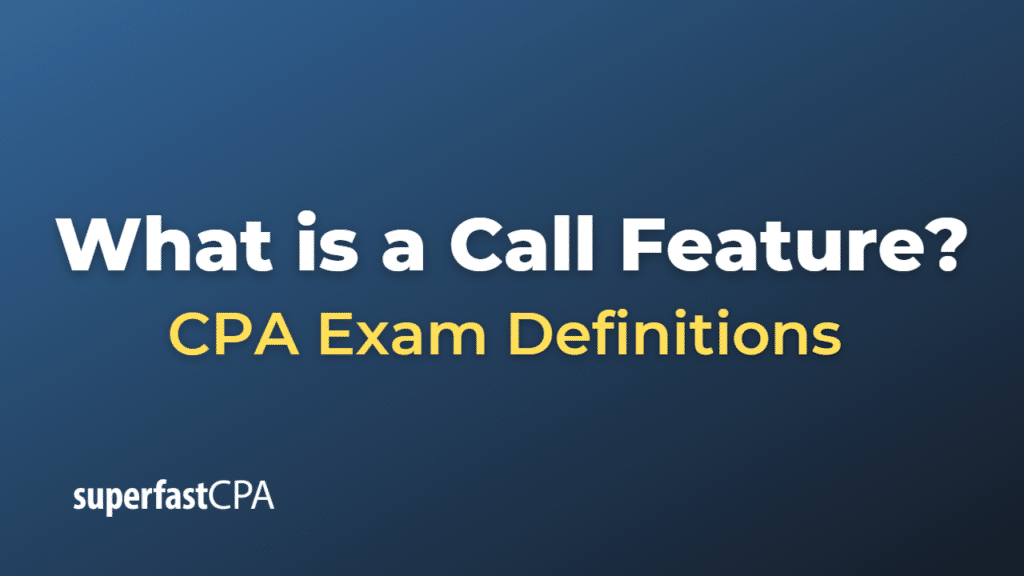Call Feature
A call feature, also known as a call provision or callable bond, is a provision in a bond or other debt security that allows the issuer to redeem the bond before its maturity date. The issuer has the right, but not the obligation, to “call” or buy back the bond at a specified call price, usually at a premium above the face value or par value of the bond. Call features are typically included in bond contracts to give the issuer more flexibility in managing their debt obligations.
The primary reason for including a call feature is to allow the issuer to refinance their debt if interest rates decline or if their credit quality improves. By calling the bonds and redeeming them early, the issuer can issue new bonds at a lower interest rate, thus reducing their overall cost of borrowing.
For bond investors, callable bonds may be less attractive than non-callable bonds because the call feature introduces reinvestment risk. If the issuer calls the bond, the investor may be forced to reinvest the proceeds in a lower-yielding security due to prevailing lower interest rates. To compensate for this risk, callable bonds typically offer a higher yield than similar non-callable bonds.
Some key aspects of a call feature include:
- Call date: The date on which the issuer has the right to call the bond. Some bonds may have multiple call dates, and some may become callable at any time after a certain date.
- Call price: The price at which the issuer can buy back the bond, usually expressed as a percentage of the bond’s face value. The call price may include a premium to compensate bondholders for the early redemption.
- Call protection: A period during which the bond cannot be called, offering some protection to bondholders against the issuer redeeming the bond too soon.
When investing in callable bonds, it is essential for investors to consider the potential impact of the call feature on their investment returns and to carefully evaluate the call provisions in the bond contract.
Example of a Call Feature
Let’s consider a hypothetical example of a callable bond.
Imagine a company called “BlueSky Enterprises” decides to issue a 10-year callable bond with a face value of $1,000 and an annual coupon rate of 5%. The bond has a call feature that allows BlueSky Enterprises to call the bond after five years, starting on the call date, at a call price of 102% of the face value.
As an investor, you decide to purchase one of these BlueSky Enterprises callable bonds. Each year, you receive interest payments of $50 (5% of $1,000) for holding the bond.
Five years after the bond’s issuance, prevailing interest rates in the market have declined, and BlueSky Enterprises can now issue new bonds at a 3% interest rate. To take advantage of the lower interest rates, the company decides to exercise the call feature and redeem the outstanding callable bonds.
On the call date, BlueSky Enterprises pays you the call price of $1,020 (102% of $1,000) to redeem the bond. As a bondholder, you now have to reinvest the $1,020 in the market, where you may only be able to find bonds yielding 3% due to the lower prevailing interest rates.
In this example, the call feature allowed BlueSky Enterprises to refinance its debt at a lower interest rate, while as an investor, you faced reinvestment risk and had to reinvest the proceeds in a lower-yielding security. This illustrates the importance of understanding the implications of a call feature when investing in callable bonds.













